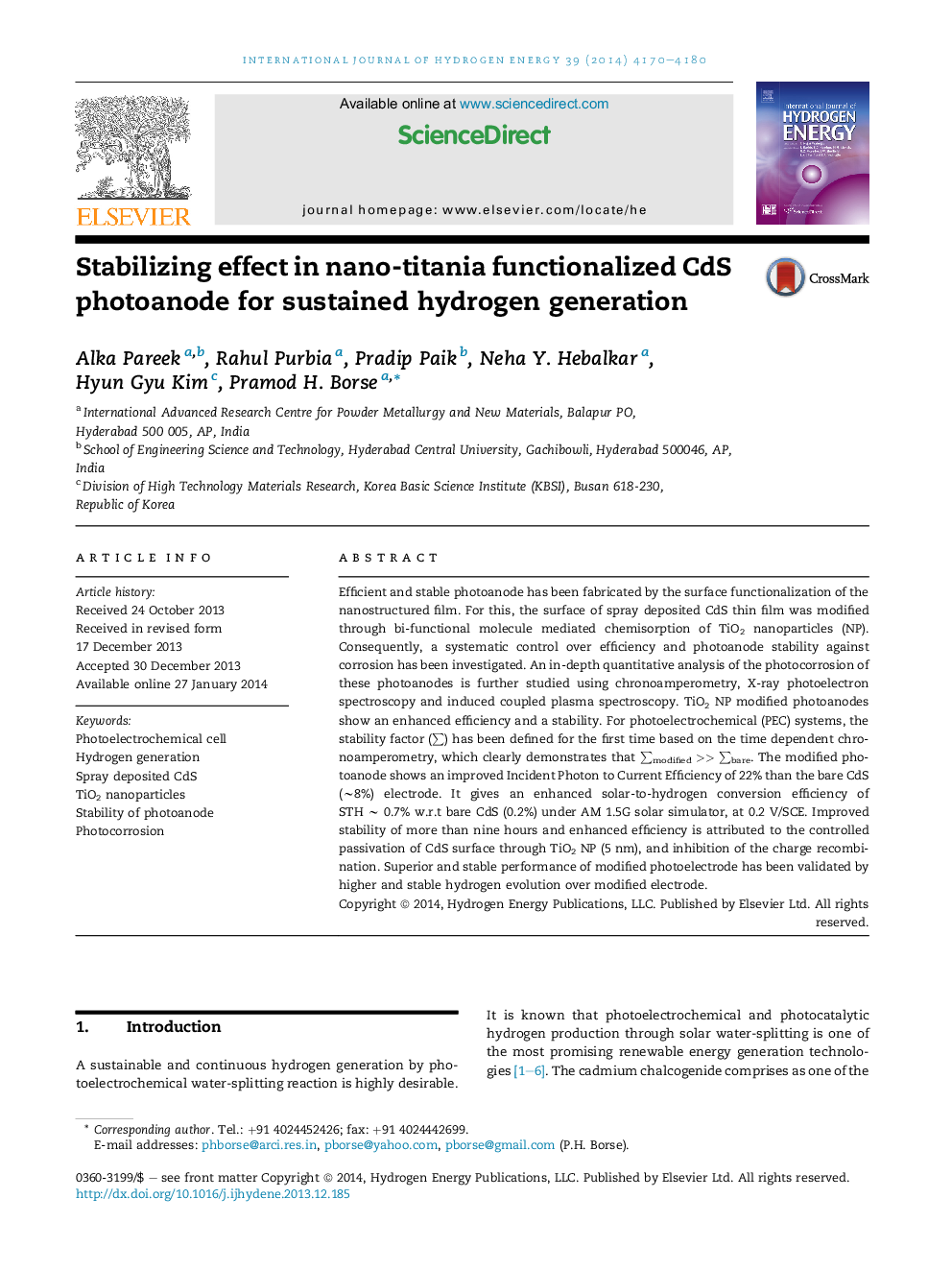| Article ID | Journal | Published Year | Pages | File Type |
|---|---|---|---|---|
| 1270504 | International Journal of Hydrogen Energy | 2014 | 11 Pages |
•CdS photoanodes modified with TiO2 nanoparticles for stable photoelectrochemical H2 production.•New photoanodes enhanced photocurrent by 3.7 times and efficiency by twice.•Modification yielded highly stable photoelectrode giving ≥9h of PEC performance.•Quantitative analysis of photoelectrode stability is demonstrated.•Sustained H2 evolution validates the stable performance of new photoanodes.
Efficient and stable photoanode has been fabricated by the surface functionalization of the nanostructured film. For this, the surface of spray deposited CdS thin film was modified through bi-functional molecule mediated chemisorption of TiO2 nanoparticles (NP). Consequently, a systematic control over efficiency and photoanode stability against corrosion has been investigated. An in-depth quantitative analysis of the photocorrosion of these photoanodes is further studied using chronoamperometry, X-ray photoelectron spectroscopy and induced coupled plasma spectroscopy. TiO2 NP modified photoanodes show an enhanced efficiency and a stability. For photoelectrochemical (PEC) systems, the stability factor (∑) has been defined for the first time based on the time dependent chronoamperometry, which clearly demonstrates that ∑modified >> ∑bare. The modified photoanode shows an improved Incident Photon to Current Efficiency of 22% than the bare CdS (∼8%) electrode. It gives an enhanced solar-to-hydrogen conversion efficiency of STH ∼ 0.7% w.r.t bare CdS (0.2%) under AM 1.5G solar simulator, at 0.2 V/SCE. Improved stability of more than nine hours and enhanced efficiency is attributed to the controlled passivation of CdS surface through TiO2 NP (5 nm), and inhibition of the charge recombination. Superior and stable performance of modified photoelectrode has been validated by higher and stable hydrogen evolution over modified electrode.
Graphical abstractEfficient and stable photoanode has been fabricated by the surface functionalization of the nanostructured film. For this, the surface of spray deposited CdS thin film was modified through bi-functional molecule mediated chemisorption of TiO2 nanoparticles (NP). The modified photoanode shows an improved Incident Photon to Current Efficiency of 22% than the bare CdS (∼8%) electrode. Improved stability of more than nine hours and enhanced efficiency is attributed to the controlled passivation of CdS surface with TiO2 NP (5 nm) and inhibition of the charge recombination. Superior and stable performance of modified photoelectrode has been validated by high and stable hydrogen evolution over modified electrode.Figure optionsDownload full-size imageDownload as PowerPoint slide
